Imagine stepping onto your patio and being greeted by the lush, romantic blooms of peonies, their fragrance wafting through the air like a gentle reminder of nature’s elegance. Whether you’re a seasoned gardener or a green-thumbed novice, growing peonies in containers is a delightful journey that transforms any small space into a vibrant oasis. This article is your guide to nurturing these perennial beauties, offering practical tips and insights to ensure your container-grown peonies flourish for years to come.
For those new to gardening, container gardening opens up a world of possibilities, making it accessible to anyone with a sunny spot and a bit of enthusiasm. Experienced gardeners will find growing peonies in pots a rewarding challenge, adding versatility and charm to their gardening repertoire. Along the way, you’ll discover how to choose the right container, select the perfect peony varieties, and master the art of soil preparation and watering techniques.
As we delve into the essentials of container gardening with peonies, you’ll learn how to combat common pests and diseases, ensuring your plants stay healthy and vibrant. We’ll also explore creative ways to integrate these stunning blooms into your outdoor decor, enhancing the beauty of your home with their timeless appeal. Join us on this horticultural adventure, and let your love for gardening blossom like the peonies you’ll soon be growing.
Select Suitable Peony Varieties
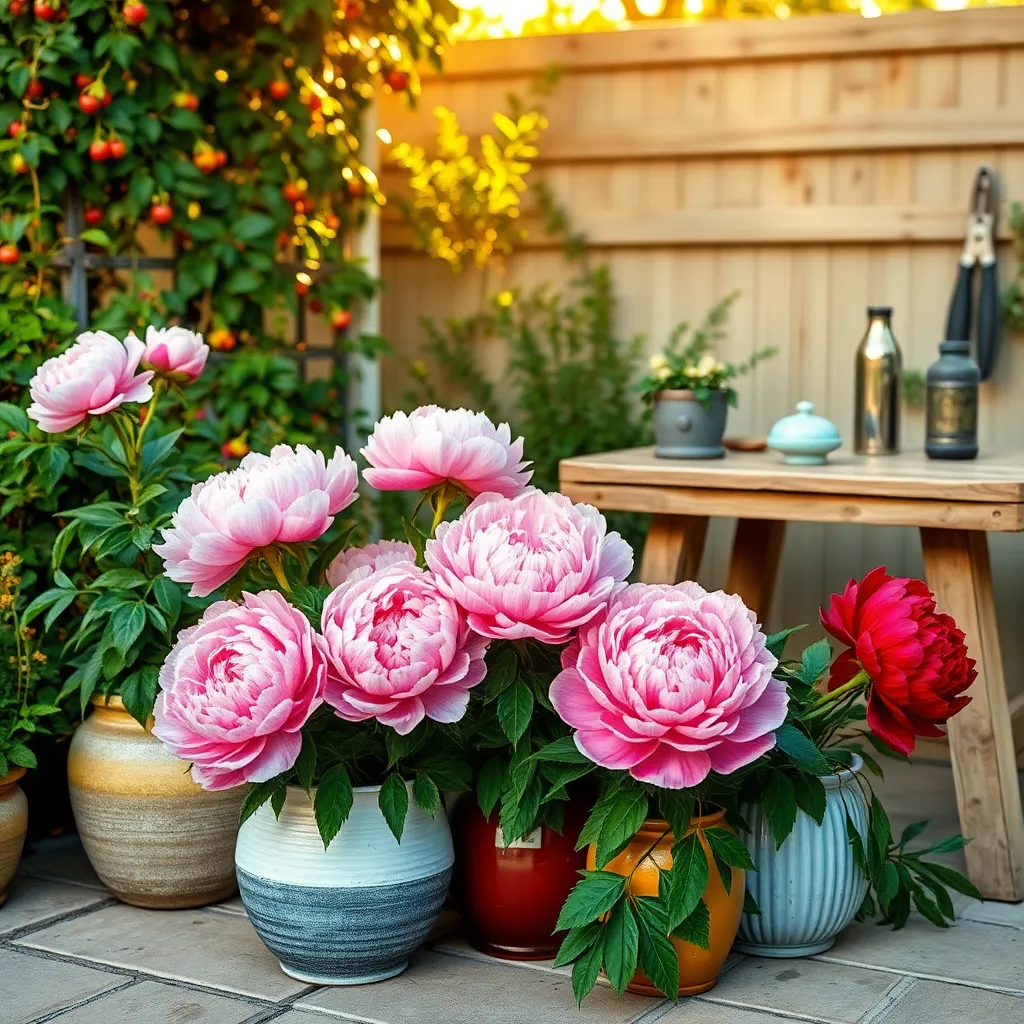
When selecting peony varieties for container gardening, consider choosing compact and dwarf varieties, as they are well-suited for limited space. Varieties such as ‘Claire de Lune’ and ‘Little Red Hen’ remain smaller and are easier to manage in pots, making them ideal for this setup.
Another important factor is the hardiness zone of the peony variety. Ensure that your chosen variety can thrive in your local climate, which will help your container peonies survive and bloom beautifully.
Opt for peony varieties that have strong stems to prevent bending or breaking under the weight of their blooms. Varieties like ‘Coral Charm’ and ‘Bowl of Beauty’ are known for their sturdy stems and stunning flowers, making them excellent choices for containers.
Finally, consider the flowering time of different peony varieties, as this will affect when you can enjoy their blooms. Staggering early, mid, and late-season varieties can provide a prolonged flowering period, keeping your container garden vibrant for months.
Prepare Well-Draining Potting Mix
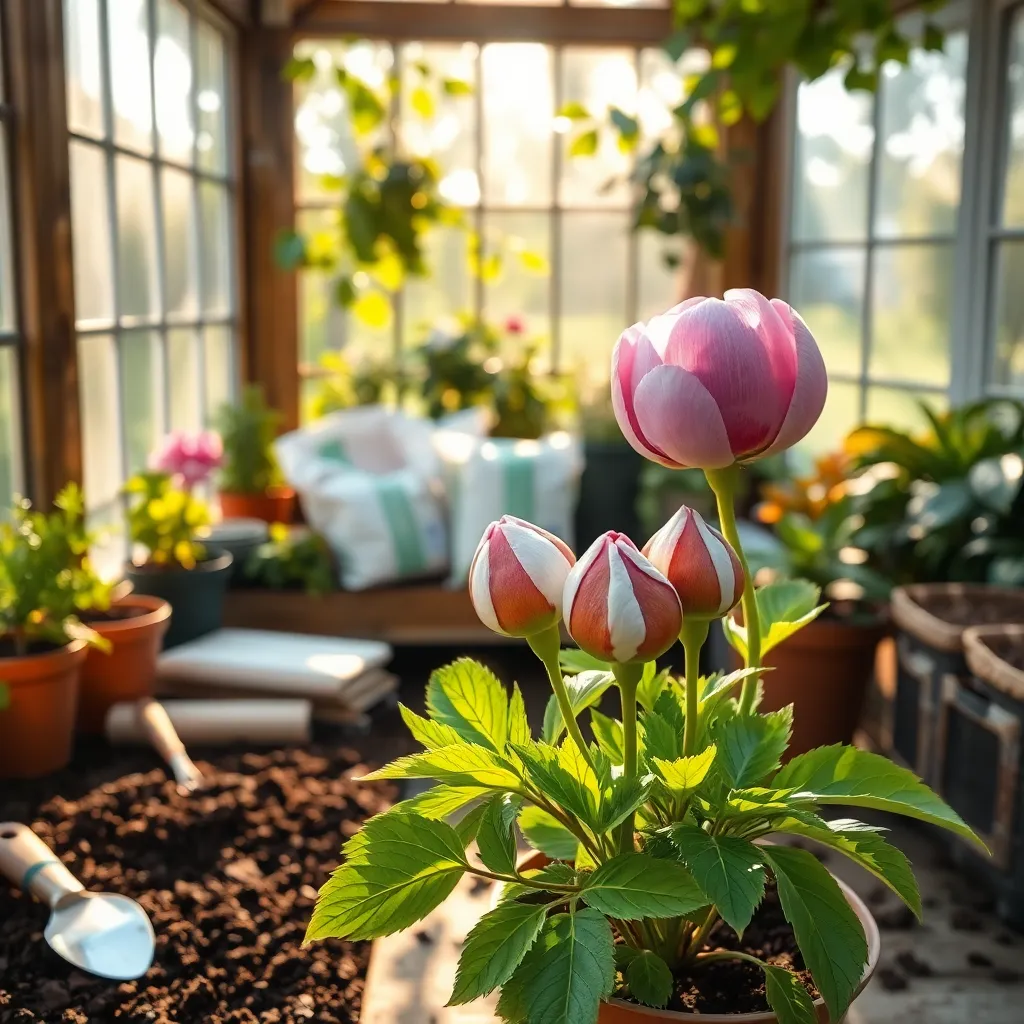
For peonies to thrive in containers, it’s essential to use a well-draining potting mix. A mix that retains too much moisture can lead to root rot, which is a common issue with container-grown peonies.
Start by choosing a high-quality potting soil as the base for your mix. This should be combined with materials that enhance drainage, such as perlite or coarse sand, which help prevent water from pooling around the roots.
Consider adding organic matter like aged compost or well-rotted manure to the mix. These materials improve soil structure and provide essential nutrients, giving your peonies a healthy start.
For gardeners with more experience, incorporating a small amount of crushed granite or pumice can further improve drainage and aeration. These additions are particularly useful in regions with high humidity or frequent rainfall.
- Mix 60% potting soil with 20% perlite and 20% organic matter for a balanced blend.
- Before planting, moisten the mix slightly to ensure even distribution of moisture.
- Regularly check the soil moisture level; water when the top inch feels dry to the touch.
Position Containers for Optimal Sunlight
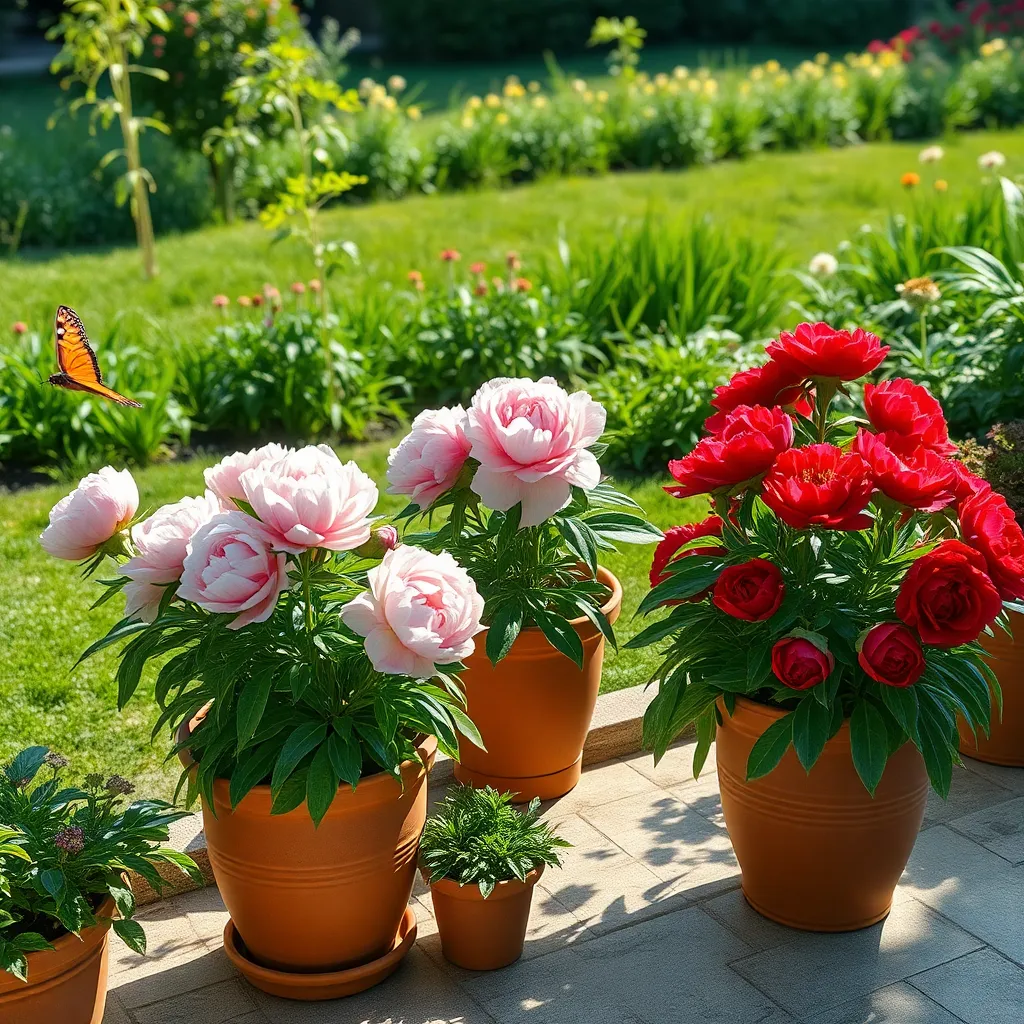
When growing peonies in containers, ensuring they receive optimal sunlight is crucial for their health and flowering. Peonies thrive best with at least six to eight hours of direct sunlight daily, so position your containers in a bright, open space.
Consider placing your containers on a patio, deck, or balcony where sunlight is abundant throughout the day. If you have a garden space with eastern exposure, this can be ideal as it provides gentle morning sun without the harsh afternoon heat.
To maximize light exposure, rotate your containers every couple of weeks. This practice helps prevent the plant from leaning towards the light source and encourages more balanced growth, which is especially beneficial for peonies due to their full, bushy nature.
For those in particularly hot climates, providing some afternoon shade can prevent heat stress on your peonies. You can use a shade cloth or move the container to a spot that receives filtered sunlight during the hottest part of the day.
Water Consistently Without Over-Saturating
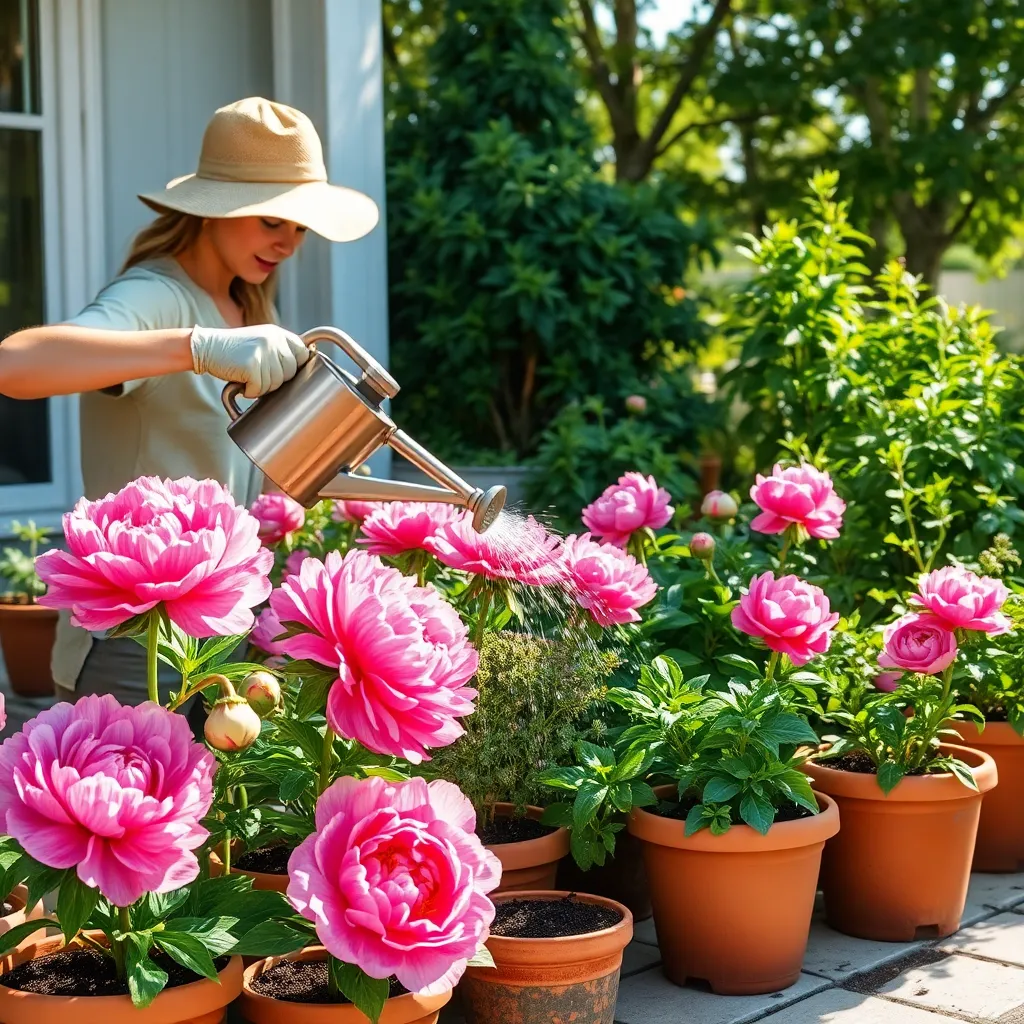
Proper watering is crucial for growing peonies in containers, as it ensures they thrive without becoming waterlogged. Begin by using a pot with good drainage holes and a well-draining soil mix, such as one containing peat moss and perlite, to prevent water from accumulating at the roots.
To maintain consistent moisture, aim to water your peonies when the top inch of soil feels dry to the touch. Using a moisture meter can help you accurately gauge the soil’s moisture level, which is especially useful for beginners still learning the nuances of plant care.
Water deeply until you see water draining from the bottom of the container to ensure the roots receive adequate hydration. However, be cautious not to leave the pot in standing water, as peonies are susceptible to root rot in overly saturated conditions.
For those in warmer climates or during peak summer months, you may need to water more frequently, but always check the soil moisture first. Consider mulching the soil surface with organic materials such as bark chips or straw to help retain moisture and reduce evaporation.
Fertilize Regularly for Robust Growth
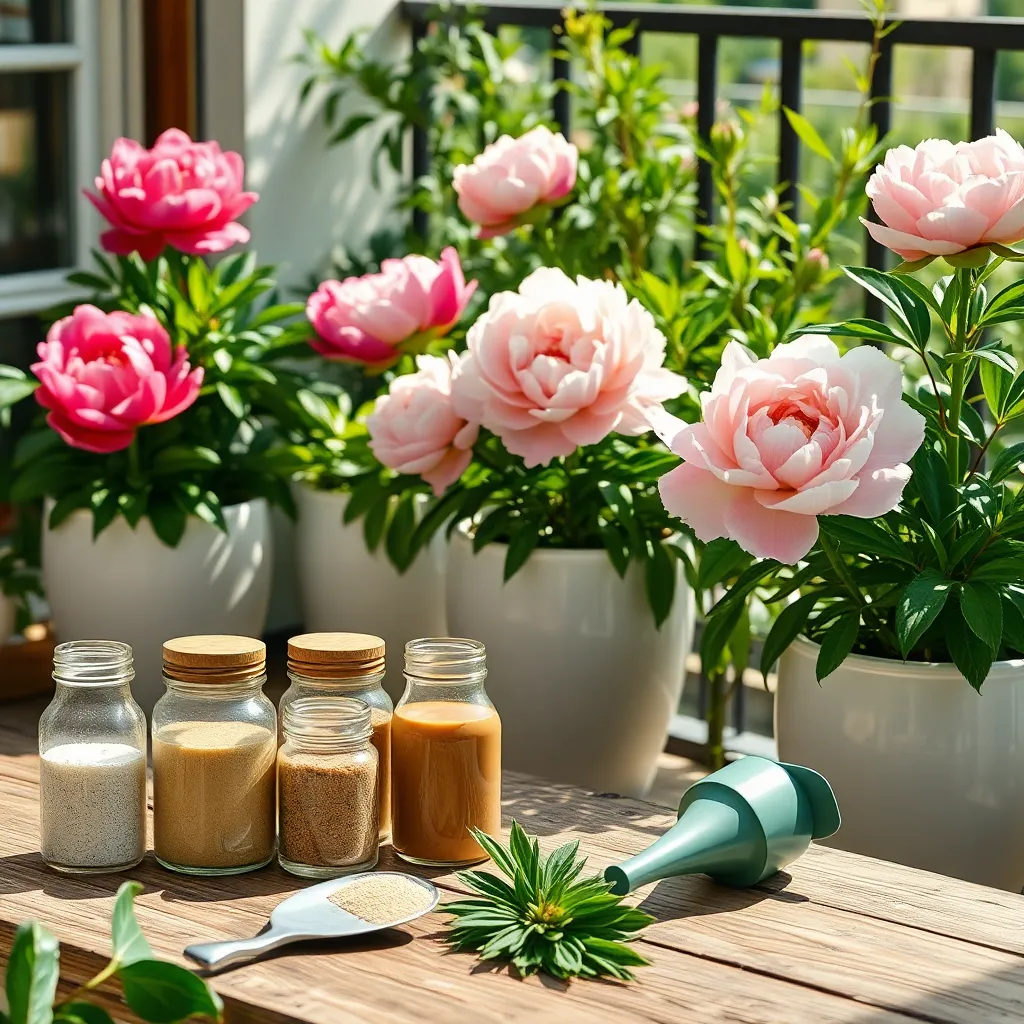
To ensure your peonies thrive in containers, it’s essential to fertilize regularly during the growing season. Start by applying a balanced, slow-release fertilizer, such as a 10-10-10 formula, in early spring when new growth appears.
Avoid over-fertilizing as it can lead to excessive foliage at the expense of blooms. Instead, follow up with a diluted liquid fertilizer every four to six weeks during the peak growing months of spring and summer.
For those looking to boost flowering, consider using a fertilizer high in phosphorus, indicated by a higher middle number like 5-10-5. This helps enhance bloom production and ensures your peonies have the nutrients they need to produce vibrant flowers.
Organic gardeners can opt for fish emulsion or compost tea as natural fertilizer alternatives, applying them with the same frequency. Regular feeding not only encourages robust growth but also strengthens the plant’s resilience against pests and diseases.
Conclusion: Growing Success with These Plants
As we’ve explored, nurturing your relationship is akin to growing peonies in containers, requiring attention, patience, and care for beautiful results. First, prioritize your partner’s needs much like ensuring your peonies have the right nutrients. Second, nurture emotional intimacy as you would provide sufficient sunlight, fostering warmth and connection. Third, communicate openly and frequently, akin to consistent watering, which keeps the relationship thriving. Fourth, give each other space to grow individually, as with proper spacing in containers. Lastly, celebrate milestones and growth, just as you would admire the blooming flowers.
To start nurturing your relationship today, pick one area to focus on—be it communication or shared activities—and dedicate time to it this week. By doing so, you’ll be taking the first step toward a more fulfilling partnership.
Make sure to save or bookmark this article as a handy guide. With continuous care and attention, your relationship can flourish beautifully, just like a garden of well-tended peonies. Embrace this journey, and let each moment of growth be a testament to your commitment and love. Your relationship success story is just beginning!
